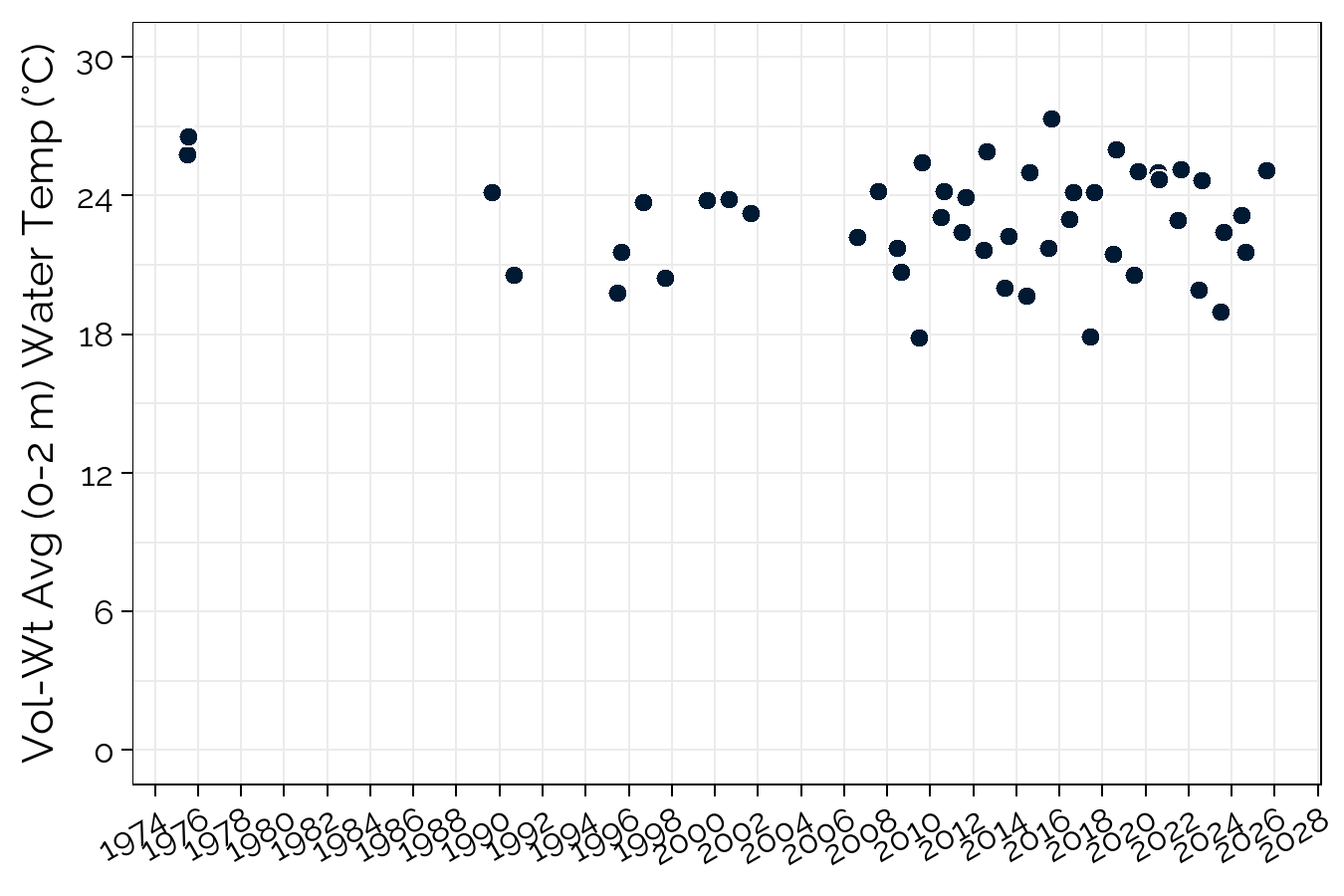Heald Pond
Josiah Heald ran a water mill in the early 1800s at the foot of a pond that now bares his name. Heald Pond is the second largest pond in the watershed at 106 acres, but at only 17 feet deep Heald is best suited to warm water fisheries such as large and small mouth bass. There’s a boat launch (6 HP max) and parking at the southern end of the pond. A GLLT trail, just a few steps down Slab City Road from the parking lot runs along the pond’s western shore.
Click to enlarge
Heald Pond (Midas #3222) drains directly to Kezar Lake through a tributary to Boulder Brook. Water quality monitoring data have been collected since 1975 at the deepest spot.
Water quality
water clarity
Since 1975, water clarity at Heald Pond has remained stable with no statistically significant trend.
total phosphorus
Since 1989, total phosphorus at Heald Pond has revealed no statistically significant trend. Higher phosphorus generally corresponds to wetter years at Heald Pond. Sediment in runoff entering the pond during rain events carries limiting nutrients. Heald Pond is highly susceptible to internal loading of phosphorus due to its shallow depth, where disturbance of bottom sediments can release phosphorus into the water column.
chlorophyll-a
Since 1996, chlorophyll-a at Heald Pond has showed no statistically significant trend. Nutrient-rich runoff entering the lake during wetter years, combined with warmer air temperatures, can fuel algae growth.
anoxic extent
Dissolved oxygen profiles show good oxygenation throughout the water column over the collection period, with some anoxia at the bottom. The extent of anoxia is overall excellent at Heald Pond (affecting <10% of pond area). Dissolved oxygen at depth should continue to be monitored closely in the future.
temperature
The volume-weighted average surface water temperature for the top 2 meters shows no statistically significant trend.
ph
Since 1989, pH at Heald Pond has degraded by about 0.5. Mean annual pH falls within acceptable ranges for aquatic life, but hit a record low in 2017.
total alkalinity
Since 1995, total alkalinity at Heald Pond has revealed no statistically significant trend. Heald Pond experiences the highest (best) annual alkalinity compared to the other ponds. However, Heald Pond is still susceptible to changes in pH, particularly from acidic deposition in the form of rain or snow, which can jeopardize the health of freshwater fish species.
color
Since 1995, color at Heald Pond has showed no statistically significant trend. Heald Pond consistently experiences the highest annual color compared to the other ponds. Color is highly related to summer precipitation; wetter years show higher color as more materials are washed off the landscape to the pond. This likely explains the record high color in 2023 which experienced wet summer conditions.









